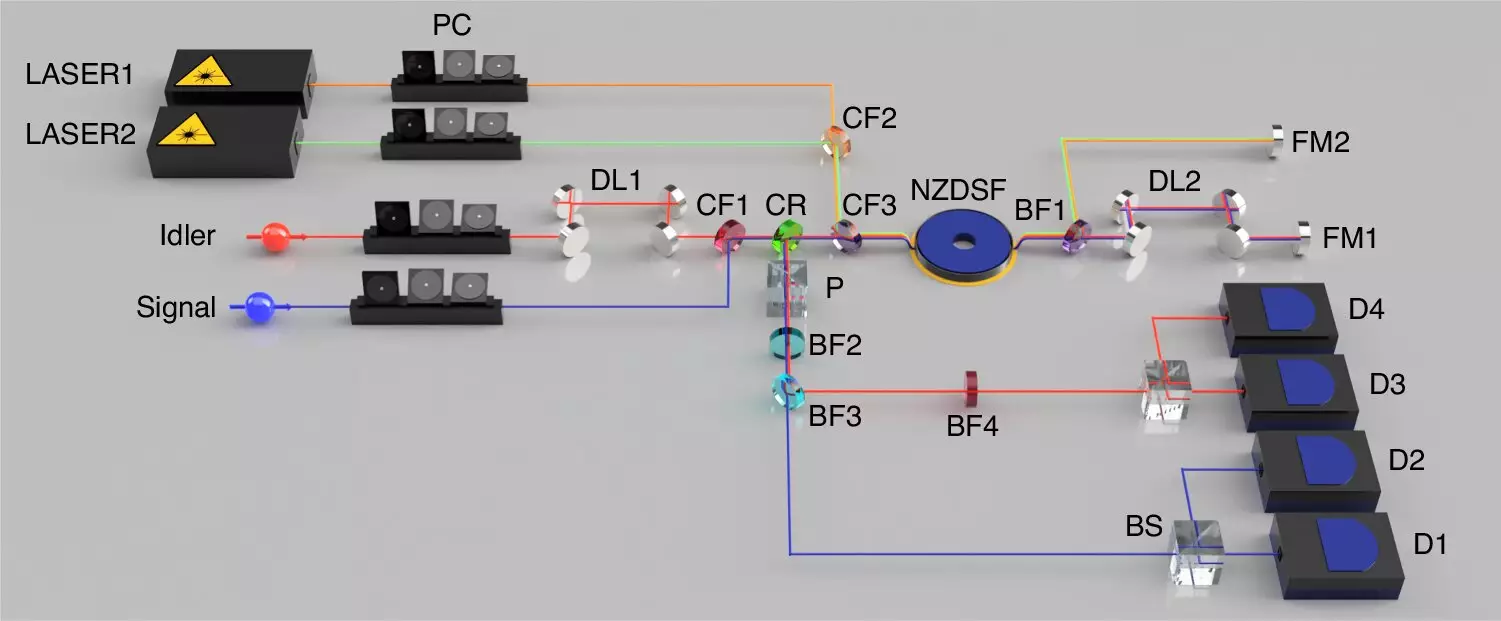The field of quantum physics has recently witnessed a groundbreaking development through the introduction of frequency-domain photon number-path entanglement. Unlike the traditional spatial-domain entanglement, this innovative approach involves manipulating the frequency of individual photons using a cutting-edge tool known as a frequency beam splitter. This tool has demonstrated an impressive success rate of 50%, paving the way for exciting advancements in quantum technologies.
One of the key aspects of frequency-domain entanglement is the utilization of NOON states, where photons are arranged in a distinct pattern that allows them to be either all in one frequency pathway or another. This unique arrangement enables a variety of applications, such as super-resolution imaging, quantum sensor enhancement, and the development of specialized quantum computing algorithms. These NOON states play a crucial role in pushing the boundaries of traditional limits and opening up new possibilities in quantum information science.
A recent paper published in Light: Science & Applications by a team of scientists led by Professor Heedeuk Shin has introduced a remarkable advancement in the field of quantum physics. By creating entangled states in the frequency domain, the researchers have achieved a significant breakthrough in quantum interference. Unlike spatial entanglement, where photons are divided between two paths, frequency entanglement distributes photons between two different frequencies. This novel approach has enabled the creation of a two-photon NOON state within a single-mode fiber, showcasing unprecedented stability and resolution in quantum interference.
Dongjin Lee, the first author of the paper, highlighted the transformative impact of this research on quantum information processing. By shifting the concept of interference from spatial paths to frequency channels, the researchers have demonstrated the potential for creating stable interferometers with double the resolution of traditional single-photon systems. This discovery not only enhances our understanding of quantum phenomena but also opens up new possibilities for quantum technologies in the frequency domain.
The exploration of frequency-domain entanglement signals a promising future for quantum technologies, with potential applications ranging from quantum sensing to secure communication networks. The ability to manipulate and control the frequency of photons with precision offers unprecedented opportunities for developing advanced quantum systems and devices. As researchers continue to uncover the mysteries of the quantum world, we can expect further breakthroughs that will revolutionize the field of quantum information science for years to come.



Leave a Reply